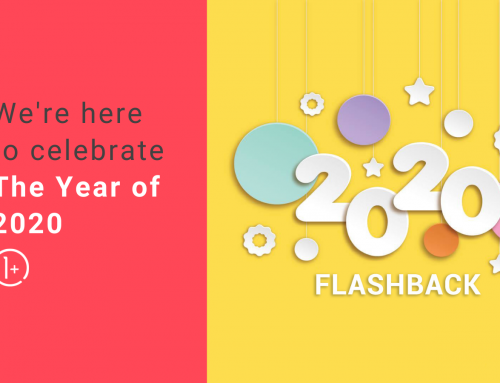Alone we can do so little; together we can do so much. – Helen Keller
Teamwork makes the dream work. Right? It’s a bit cliché but it’s still an accurate and helpful adage. As a Project Manager, it’s my role to ensure the team is working in a streamlined manner. I provide support, I assist in providing the right details and resources, I ask questions and I listen. I am in the know for them and for myself.
I’m sure there are many people who are curious about what it takes to learn the effective tools to pick up this skill, and many more wondering what it takes to keep a team running efficiently. Well, here are my shared experiences and what I see as most helpful in keeping the team afloat.
- Remember, you’re not the expert, they are.
As a Project Manager, you’re not expected to be omniscient. You’re expected to have an understanding of where to go to fill in those working gaps. You’ll need to know where the files are located, who to go to for answers in problem-solving dilemmas, and who to put in charge of leading concepts and follow-through. I find the best way to do any of this to have a handy, useful collaboration tool for collective use.
Our company chooses to use SharePoint to make knowledge sharing efficient. I enjoy it simply because it has the look and feel of a digital file case. Everything is organised in customisable folders with drop-down menus. You can tag colleagues, leave notes and messages, copy, and replicate work for ease in repetition. It syncs with Microsoft Office 365.
It does come at a cost; similar, free, tools include:
Confluence is a corporate portal app that knows how to keep things simple in the interest of letting many people collaborate on work, share calendars, and more.
Bitrix24 provides an invaluable office platform featuring calendars, social networking features, videoconferencing among other things. It goes beyond that, too, into workflow and project management, creating a digital work platform stretching from communication to the nitty-gritty of working on projects.
The free version of Slack keeps a log of the last 10,000 messages in your team, allows you to create unlimited private and public channels, and share files with your colleagues. (It also has pretty nifty GIF integration.) Admins can track everyone’s login times and IP addresses, so you can make sure that people aren’t, “slacking off.”
Check out this page for more ideas on other free collaboration tools.
- Oversee, manage, and provide direct assistance to the internal staff.
Oftentimes team members are looking for dates, project details, or the progress of a project. For this, our team uses Teamwork.com.
Teamwork creates task management and team collaboration software, and its three main products relate to project management, customer support, and real-time internal communications. Using this tool, we can create taskboards (similar to a workflow chart) which catalogues all of the elements that would go into bringing a project to life.
Taskboards house task cards (which take on internal notes, workflow directions, file links, images and videos, and can be assigned to owners (internal staff members collaborating on a project), log time (for client deliverables), and display progress percentage. You can create templates for concepts that may need to be repeated and then, voila, replicate into a taskboard according to customisation and bespoke needs. There are many more features of this tool, but it is certainly helpful to document workflow in a collaborative environment.
For companies with smaller teams and looking for cost-effective measures in tools and software, check out, Asana. It’s one of the free Teamwork Project alternatives out there. The program really shines when handling an expansive project that relies on a large team of people to collaborate and communicate. Users can create custom fields and track specific tasks, which helps to cut down on the noise and streamline even the most complicated workflows.
Zoho Projects, which offers advanced management tools and superior performance for free. If you have trouble visualising and managing all the little tasks that go into organising a large project, this tool helps. This program provides an easy way to divide up and assign tasks so that everything feels more manageable.
- Build monthly resource schedules in order to deliver customer projects to agreed timescales.
On this note, we deliver quality reports and feedback reports to our clients monthly, quarterly, and annually. We find this to be the best method to ensure transparency, consistency in deliverables, and that our clients’ needs are met and kept up to date in relevance. Keeping a universal calendar with everyone’s projects and progress is necessary. Micromanaging is reduced when the workflow is digitally managed and the calendars are kept up to date.
In teamwork, you have an option to receive daily, weekly, and monthly notification lists. This is excellent as a subtle reminder organising your daily workflow. We’ve become so familiar with this daily reminder, that I can recall a single morning when a colleague asked me, “Did you get a teamwork notification this morning because I didn’t.” To which, we discovered there was a bit of an internal system error causing a slight interruption in sending the notification that morning. The daily notification is neatly organised according to priority level, date of deadline, and future items coming up.
- Ensure the delivery of projects and products are to the appropriate levels of quality and integrity delivered to clients.
This could be accomplished by running impact assessments. These are typically bi-annually or when new policy measures/practices are put into place, and can safely mitigate any risks or lags in delivering a quality product to the client. Putting the time aside to prioritise evaluating a projects’ timeline can be valuable in consistently conducting business.
In our case, we’re an events company. Not only do we remain in the know with current legislature regarding event’s management, but we also develop our staff by providing training and certification development. These are just a handful of ways we ensure we’re providing an appropriate level of quality to our clients’ needs.
We work with a large supply of third-party vendors when we are organising a party or setting up an event for catering, etc. Thus, we rely on our internal checks to ensure the vendors we’re working with are kept up to date in comms lists and that their product is still on the same expected level of quality. When we work with third-party vendors, their names aren’t at stake, it’s our brand and our reputation delivering the product. It just makes sense to consistently check on your resource list.
- Keep up to date with CPD (certified professional development) programmes.
Lastly, you may want to keep up to date with the latest educational resources available to enhance your internal staff’s CVs. A few of the ways you can do this is by taking advantage of the numerous qualifications and certification programmes on the market. Many colleges will allow you to take a course at a master’s level for half a year and walk away with a certification as an expert in that field. Granted, it’s not an MSc per se, but it is a level 9 cert and still coveted.
“Employers love to see (a PMP certification) since employees with the PMP certification tend to have a more sophisticated approach to taking projects from inception through to completion across different methodologies,” adds Bryant Vargas, Director of Recruiting, Information Technology at Atlas Search.
From sales to marketing to customer service and more, many departments in a corporate setting rely on customer relationship management (CRM) platforms, and Salesforce is one of the most popular choices. Here are details on a Salesforce.com certification.
With a CSM certification, you’ll understand Scrum methodology, know how to facilitate strong teamwork, and be able to adapt the team’s focus to evolving conditions. CSM-certified managers are in high demand in IT, engineering, and other rapidly developing fields.
With companies looking to streamline operations and integrate new technologies into their organisations, there’s a growing demand for managers who are CBPA certified.
No matter what, the best method to tackling an effective workflow is to trust the talent you’ve hired. People don’t need to be micromanaged, and we see this in our line of business. We respect the quality of knowledge our staff has and we boost it by offering more coaching, assistance, task-swapping, encouragement and praise in a job well done, and constructive feedback.
Collectively, we keep our company moving forward and growing stronger.







Leave A Comment